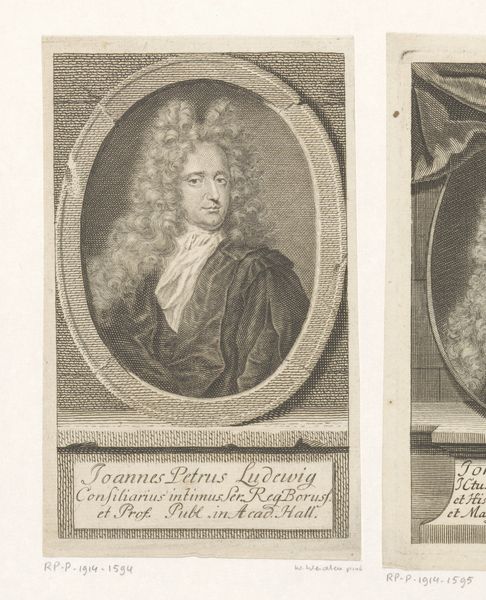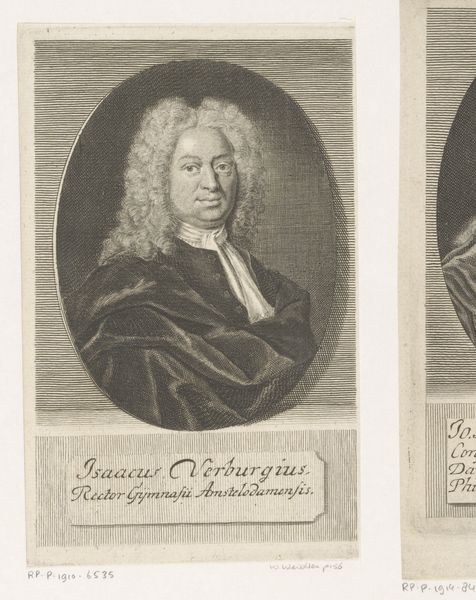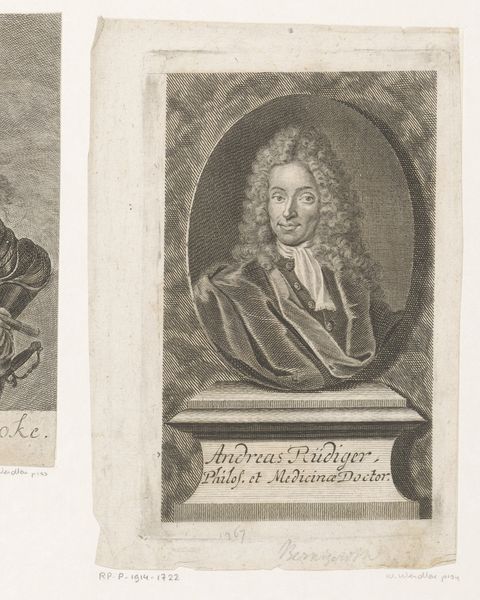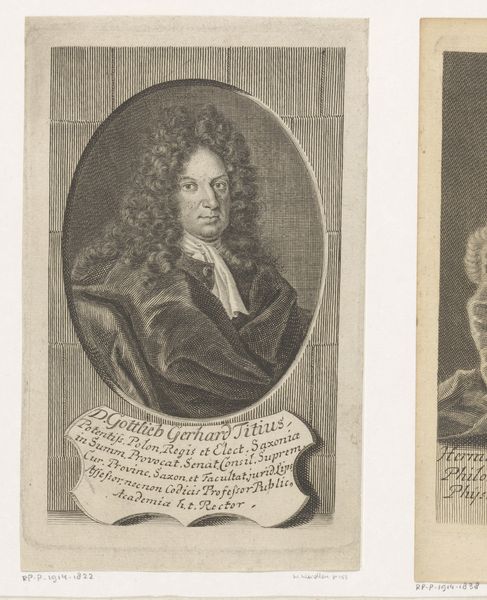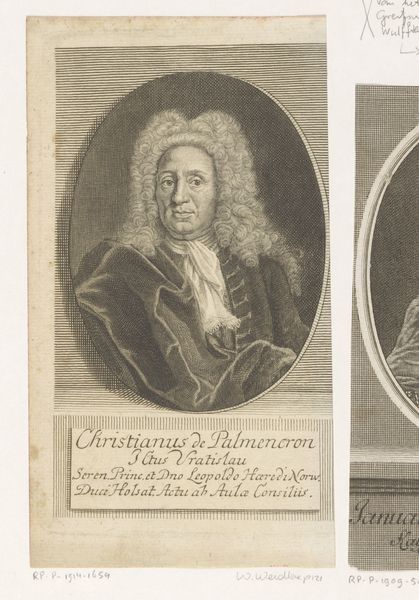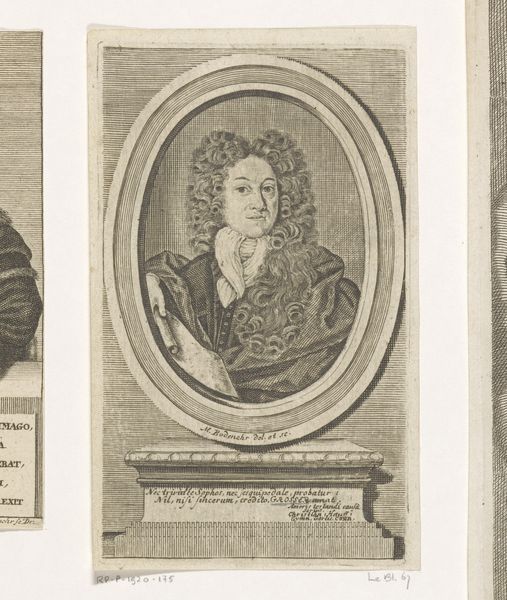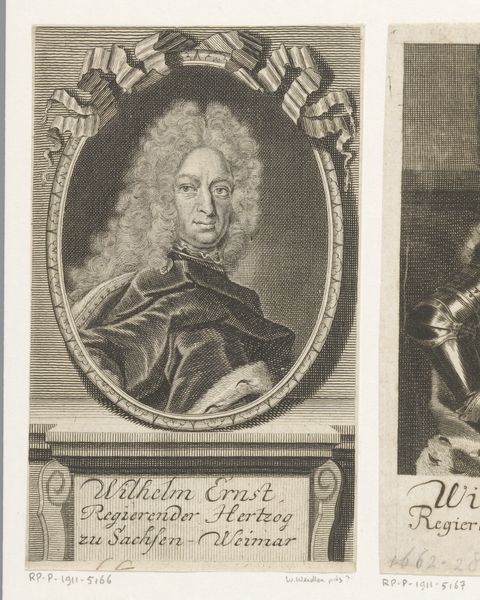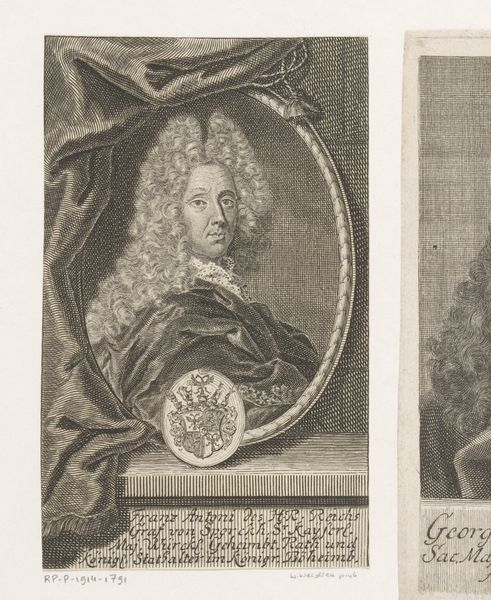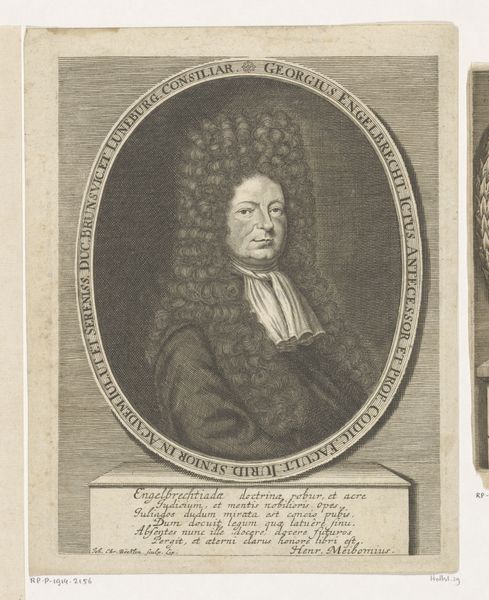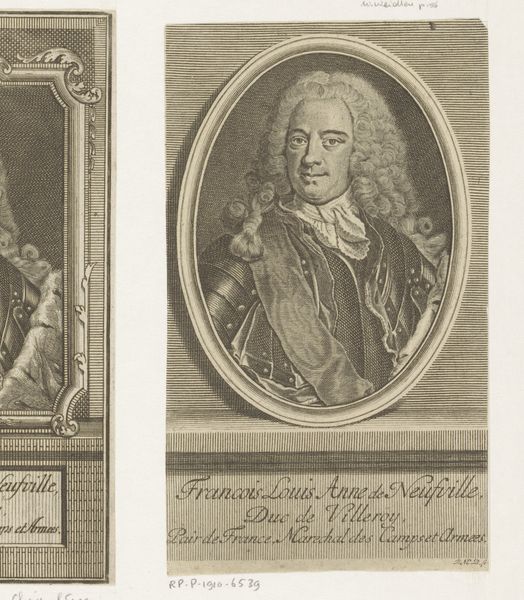
print, engraving
#
portrait
#
baroque
# print
#
old engraving style
#
figuration
#
line
#
history-painting
#
engraving
Dimensions: height 177 mm, width 99 mm
Copyright: Rijks Museum: Open Domain
Curator: We’re looking at a piece titled "Portret van Alexander Hermann Graf von Wartensleben" by Martin Bernigeroth, created in 1717. It's an engraving, quite typical of the Baroque era. Editor: My first impression is of overwhelming formality. The intricate linework captures this man's armor and the voluminous wig… it almost feels like a statement about status over personhood. Curator: Exactly! These portrait engravings played a crucial role in disseminating power and influence. Wartensleben, being a Prussian General Field Marshal, benefited greatly from such imagery. Consider how printmaking enabled wider circulation than painted portraits, extending his reach. Editor: The medium definitely reinforces the message. Engraving lends itself to sharp lines and detail, perfect for illustrating the rigid structure of his uniform. And the oval frame…it’s almost like containing this power. The controlled space seems key here. Curator: Indeed, that controlled representation aligns with the absolutist political climate. Wartensleben was a key figure in the Prussian military and court, and his image here broadcasts strength and stability – virtues vital for the state's propaganda machine. Editor: Though it is effective as propaganda, I still can’t help but feel it reduces him. Does it give any hint about his inner life beyond his position? Are those stern features meant to impress respect, or evoke fear? Curator: Well, portraits of this nature usually prioritize conveying a sense of authority over psychological depth. Although Bernigeroth worked primarily as a printmaker who reproduced images created by other artists, he also completed individual portrait engravings such as this one. That he was a key disseminator of propaganda through this means can't be overstated. Editor: Perhaps we can read something into the formal elements—the precise, repetitive strokes…they evoke both order and a certain coldness. Do you suppose that says something of the person, too, and not just his office? Curator: That’s an interesting interpretation. While engravings during the period tend to flatten character for broad communication and public address, an argument for his controlled individuality also exists given his political position. Editor: It's compelling to consider how the formal aspects reinforce social and political power dynamics. An exercise in tight framing for those days. Curator: Absolutely, a study in controlled imagery and baroque self-fashioning.
Comments
No comments
Be the first to comment and join the conversation on the ultimate creative platform.

